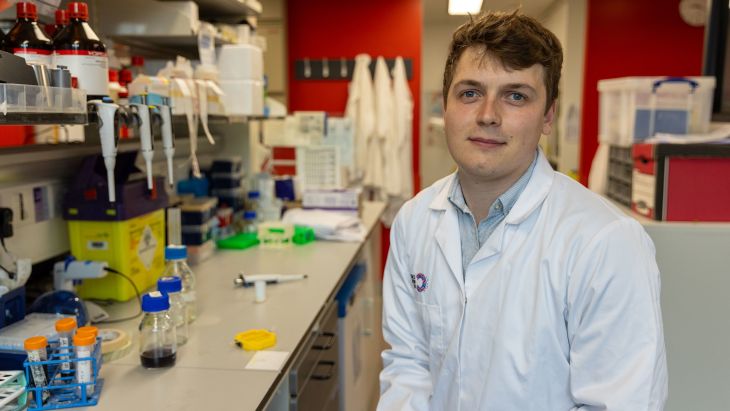One of their key projects involves photoacoustic imaging, a technology combining light and ultrasound. Normal ultrasound scanners send sound into the body and measure the echo. Photoacoustic imaging systems, however, measure the ultrasound generated when molecules absorb light and heat up.
Photoacoustic images show how molecules in the body are changing and are particularly useful for measuring oxygen levels in the blood. “This is a useful feature for looking at cancer,” said Thomas Else, a research associate in Bohndiek’s team. “Cancers tend to have lower oxygen levels than healthy tissue because they grow so quickly.”
Most widely-used methods for detecting and monitoring cancer – such as MRI and X-ray mammography machines – are bulky and expensive pieces of equipment, and in the case of mammography uses ionising radiation and applies painful compression.
“The lack of ionising radiation makes photoacoustic imaging safe and suitable for long-term monitoring, and it can produce high-contrast images at the bedside, like an ultrasound,” said Else. “Photoacoustic systems are also lower cost and more portable than MRI machines, which makes it a valuable cancer monitoring technique in a wider range of medical settings.”
Photoacoustic imaging is already CE-marked in Europe and FDA-approved in the United States for breast cancer detection which could be a cost-effective alternative to traditional mammograms.
However, one of the challenges with the application of photoacoustic imaging, like several light-based medical technologies, is that it does not perform as well for people with darker skin tones. Melanin, the main pigment that affects skin tone, absorbs light, meaning less light can get through the skin to make a measurement.
Typically, photoacoustic imaging uses light from the red end of the visible spectrum to the infrared – at wavelengths around 700 to 900 nanometres. In this range, haemoglobin in the blood is the main source of contrast. But in darker-skinned patients, melanin can overwhelm the haemoglobin signal.
“Melanin in the skin blocks some light and prevents it from getting deep into the tissue and to the cancer or the organ we want to image,” said Else. “We wanted to look at the physics behind the underperformance of light-based imaging technologies for people of colour, which could help us address it.”
















